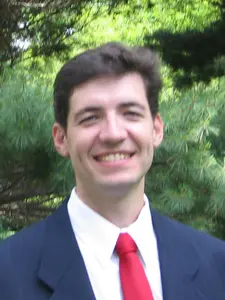
Research Interests
Professor Linton's research interests focus on understanding the interactions between molecules, and exploiting these interactions to effect chemical or biological changes. Specific areas of interest are receptor design, recognition of proteins and DNA, protein mimetics, and receptor-mediated chemical synthesis.
At the current time there are three projects underway in the Linton lab, artificial beta-sheet peptidomimetics, using hydrogen/deuterium exchange to quantify hydrogen bonding, and receptor-mediated chemical synthesis.
Beta-sheets are a fundamental secondary structure found in a variety of proteins, but are difficult to mimic in small molecules. Our approach creates small molecules which constrain peptide sidechains into the extended conformation of a beta-sheet. One straight-forward example can be found in Organic Letters, where a cystine linker to propagate an extended conformation in what is likely the world's smallest folded beta-sheet. The rigidity of these structures permits the application to the study of various proteins whose function is derived from a beta-sheet structure, including the inhibition of HIV protease, and Ras oncogenic pathways. Additionally these structures may find uses as novel materials as well as the recognition of specific peptide sequences. This work is supported by an award from Research Corporation.
In the course of the creation of artificial beta-sheets, hydrogen/deuterium (H/D) exchange was used to probe the hydrogen bonding characteristics. The work in our group has shown that this technique can provide more detailed information about hydrogen bond strength than other existing methods. We have observed a novel phenomenon where H/D exchange can be used to identify the individual hydrogen bond donors and acceptors, which is difficult using other techniques. This work recently appeared in the Journal of the American Chemical Society. We continue to expand the usefulness of this technique by quantifying these interactions and probing the steric and electronic limitations.
A third research area relates to the exploitation of small-molecule receptors to modulate the reactivity of bound substrates. These receptors can include commercially available molecules, artificially synthesized receptors and in some cases proteins. This strategy uses binding energies to regulate the environment in which a molecule reacts, permitting control of product distribution, asymmetric synthesis, and providing models for enzyme active sites. As part of a collaboration with Scott J. Miller, we have shown that pentapeptides can be used an asymmetric organocatalysts in the Michael addition of nitroalkanes. They achieve this remarkable selectivity using only hydrogen bonds in the peptide backbone and sidechains.